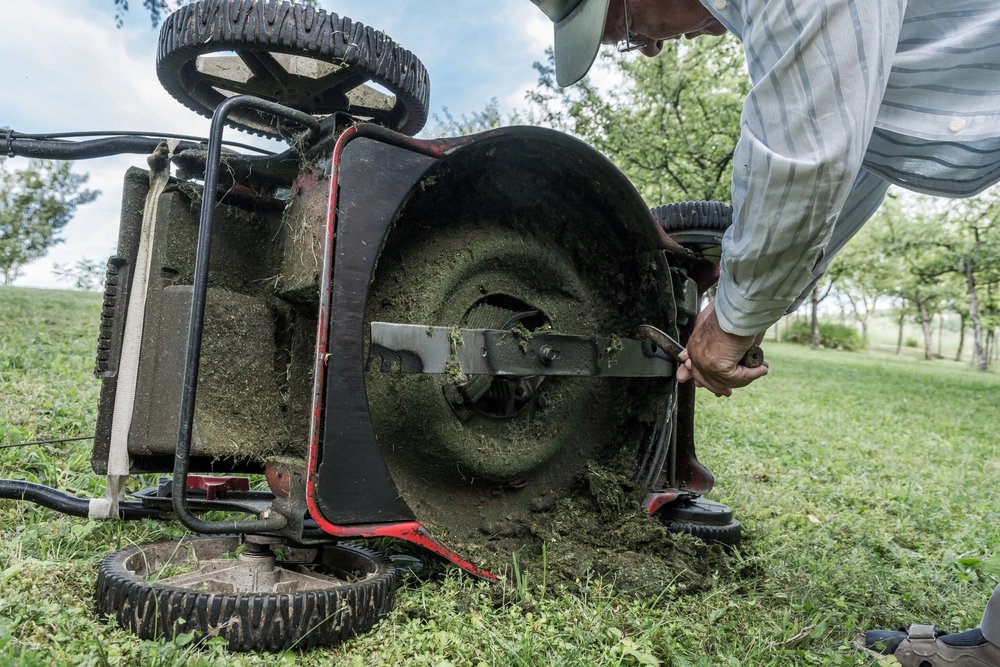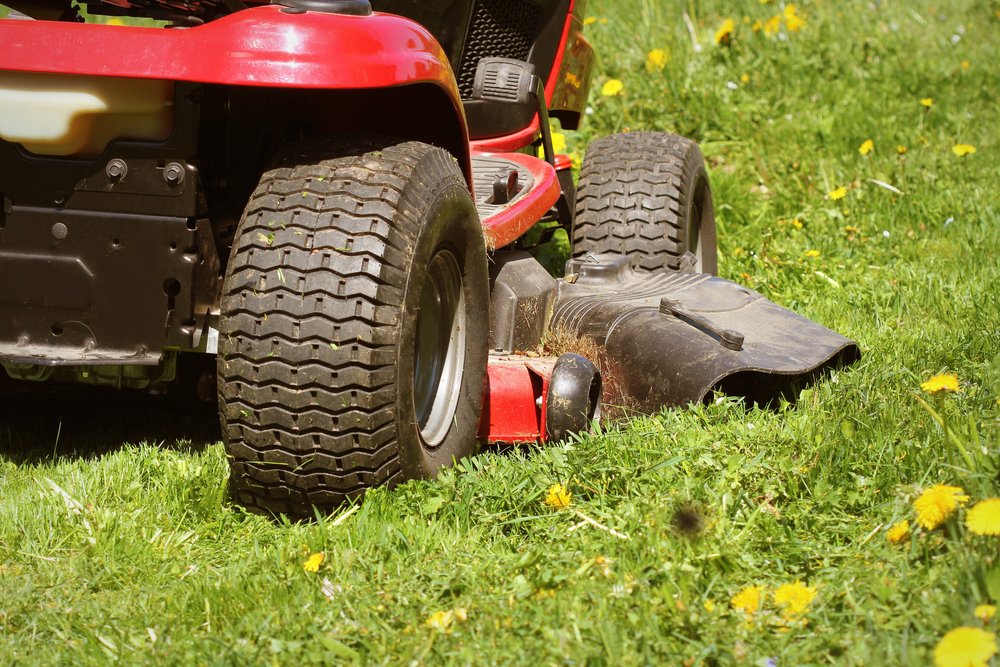Keeping your lawn looking pristine starts with having the best lawn mower blades for the job. You might not realize it, but the type and condition of your mower blades have a huge impact on the health and appearance of your grass. Whether you’re a seasoned gardener or a first-time homeowner, choosing the right blades can make all the difference in achieving that picture-perfect lawn you’ve always wanted.
In this guide, you’ll learn about different blade types, including mulching blades, and what factors to consider when selecting new ones for your mower. We’ll walk you through how to measure and replace your blades, ensuring you get the perfect fit for your machine. Plus, you’ll discover some handy tips on maintaining your blades to keep them sharp and effective. By the end, you’ll be well-equipped to make an informed decision and keep your lawn looking its best all season long.
Types of Lawn Mower Blades
When it comes to choosing the best lawn mower blades for your yard, you’ll encounter several types, each designed for specific purposes. Understanding these different blade types will help you make an informed decision based on your lawn’s needs.
Standard Blades
Standard blades, also known as straight or medium-lift blades, are the most common type you’ll find on regular lawn mowers. These blades have a slight curve at the ends, which helps create airflow for cutting and suction. They’re efficient on both dry and damp surfaces, making them suitable for various conditions. You’ll find these blades work well for large grass patches, but they might struggle with smaller clumps, potentially resulting in an uneven cut.
Mulching Blades
If you’re looking to nourish your lawn naturally, mulching blades are an excellent choice. These blades have a more pronounced curve and often feature extra cutting surfaces along the edges. They work by cutting grass clippings into finer pieces, which are then returned to the lawn as natural fertilizer. Mulching blades are ideal when you’re not planning to bag or discharge clippings, and they work best when you’re following the “1/3 rule” – only removing a third of the grass blade’s length in each mow.
High-Lift Blades
High-lift blades are distinguished by their pronounced vertical angles along the edges. This design creates maximum airflow and strong suction, making them perfect for tall grass and bagging clippings. These blades keep grass upright for a precise cut, resulting in a clean, manicured look. They’re particularly effective when you’re dealing with grass over 3 inches tall or cutting flimsy grass types like turf-type tall fescue.
Low-Lift Blades
For sandy or dusty environments, low-lift blades are your best bet. These blades have less curved edges compared to standard blades, creating less suction. This design keeps grass anchored for cutting without lifting too much dust or sand. Low-lift blades are ideal for short grass (under 3 inches) and rigid grass types like Bermudagrass. They’re also quieter and more energy-efficient, which can extend your mower’s lifespan.

Factors to Consider When Choosing Blades
When selecting the best lawn mower blades for your yard, you need to take several factors into account. Your choice can have a significant impact on the health and appearance of your grass. Let’s explore the key considerations to help you make an informed decision.
Grass Type
The type of grass in your lawn plays a crucial role in blade selection. For well-manicured lawns with short grass, a standard blade often suffices. However, if you’re dealing with taller or thicker grass, a mulching blade might be more effective. Certain grass varieties, like Bermudagrass, perform better with low-lift blades, while turf-type tall fescue may require high-lift blades for optimal cutting.
Lawn Size
The size of your lawn is another important factor. For larger lawns, you might want to consider blades designed to collect grass clippings and debris, as this can save you time and energy. Smaller lawns may be well-served by standard or mulching blades.
Mowing Frequency
How often you mow affects your blade choice. If you follow the “1/3 rule” (removing only a third of the grass blade’s length each time), mulching blades are an excellent option. They cut clippings into finer pieces, returning them to the lawn as natural fertilizer. For less frequent mowing or tackling overgrown areas, gator blades or high-lift blades might be more suitable.
Desired Finish
The final look you’re aiming for is crucial in blade selection. If you’re after a manicured, clean-cut appearance, high-lift blades might be your best bet. They create strong suction, keeping grass upright for a precise cut. For a more natural look where clippings are returned to the lawn, mulching blades are ideal.
How to Measure and Replace Mower Blades
Measuring Blade Length
To ensure you get the right replacement, you need to measure your lawn mower blade correctly. Start by turning off the mower and disconnecting the spark plug for safety. Locate the blades under the mower deck. Measure diagonally from the sharpest corner of one end to the sharpest corner on the opposite end. This method accounts for asymmetrical blades. Record the measurement in both inches and millimeters for easy comparison when shopping.
Checking Center Hole Size
Remove the blade to measure the center hole accurately. You’ll need thick safety gloves, a measuring device (preferably calipers), and a flat surface. Unscrew the bolt or nut assembly running through the center hole to detach the blade. Measure the diameter of the center hole. If there are side holes, measure their diameter and the distance between their centers. For uniquely shaped holes like star or H-pattern, note the shape name instead of measurements.
Removing Old Blades
To remove the old blades, tilt the mower back towards the handle and prop it securely. It’s best to do this when the gas tank is empty to prevent spillage. Pay attention to the blade’s position and any washers or mounting hardware, as you’ll need to replicate this when installing the new blade. The sharp edge typically faces counter-clockwise, but always check your specific model.
Installing New Blades
When installing new blades, ensure they match the length and type of your old ones. Mount the new blade in the same orientation as the old one. Use a piece of wood to prevent the blade from turning while you tighten the bolt. Wear thick gloves for safety. After installation, do a quick inspection before starting your mower to ensure everything is secure and properly aligned.
Maintaining Your Lawn Mower Blades
To keep your lawn looking its best, you need to maintain your mower blades properly. Regular maintenance not only extends the life of your equipment but also ensures your safety and the health of your grass.
Cleaning Tips
Start by prioritizing safety. Always wear sturdy work gloves and eye protection when handling sharp blades. Before cleaning, empty the fuel tank to prevent spills, and disconnect the spark plug wire to avoid accidental starts.
To clean your blades effectively, use a high-pressure hose to spray down the blades and housing, removing debris and grass clippings. For stubborn areas, use a stiff-bristled brush. Once clean, wipe the blades thoroughly on both sides.
Sharpening Techniques
Sharp blades are crucial for a healthy lawn. If you’ve sharpened your blades twice already, it’s time for a replacement. Repeated sharpening can weaken the metal, making it brittle and prone to damage. When sharpening, be extra careful as the blades will be extremely sharp.
When to Replace Blades
As a general rule, replace your mower blades every one to two years. However, certain signs indicate earlier replacement is necessary. Look out for bent blades, which can occur when you accidentally mow over rocks or other objects. Deep dents, gouges, or missing pieces are major safety hazards and require immediate replacement. Remember, damaged blades increase the risk of propelling objects during mowing.
Conclusion
Choosing the right lawn mower blades has a significant impact on your yard’s appearance and health. By considering factors like grass type, lawn size, and desired finish, you can select blades that best suit your needs. Regular maintenance, including cleaning and sharpening, is key to keeping your blades in top shape. This attention to detail will result in a lush, well-manicured lawn that’s the envy of the neighborhood.
Remember, the right blades are just one part of lawn care. To achieve the best results, pair your chosen blades with proper mowing techniques and lawn maintenance practices. Whether you opt for standard, mulching, high-lift, or low-lift blades, the goal is the same: a beautiful, healthy lawn that you can enjoy all season long. With the right tools and knowledge, you’re well on your way to creating the yard of your dreams.
FAQs
- What are the optimal types of lawn mower blades for different grass conditions?
- High-lift blades are ideal for cool-season grasses, while low-lift blades are better suited for warm-season grasses. Gator blades are recommended for mowing long grass or for shredding leaves during mowing. Mulching blades are specifically designed for use with mulching mowers or mowers equipped with a mulching kit.
- Should I choose high-lift or mulching blades for my lawn mower?
- If your main objective is to efficiently discharge grass clippings, high-lift blades are preferable. Conversely, if you aim to recycle the clippings back into the lawn as natural fertilizer, mulching blades are a superior choice.
- How can I determine the correct blades to purchase for my lawn mower?
- To find the appropriate replacement blades for your lawn mower, look for the OEM (Original Equipment Manufacturer) number, which is the specific part number assigned to the blade by the manufacturer. Entering this number along with the manufacturer’s name into a search engine or online store should yield accurate results.
- Which provides a better performance, Gator blades or mulching blades?
- Gator blades are distinct in that they lift the grass upwards, ensuring a clean and even cut, unlike typical mulching blades that tend to push the grass downwards. This characteristic makes Gator blades excellent for bagging operations as well.

